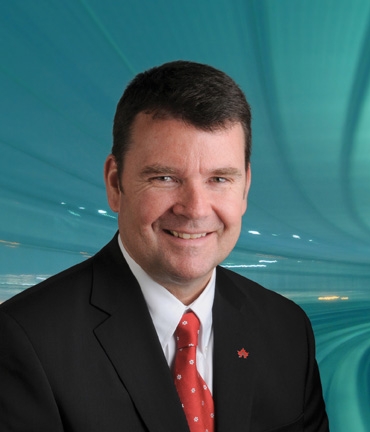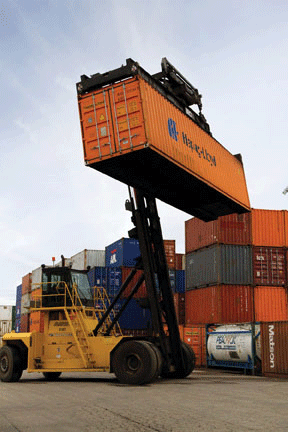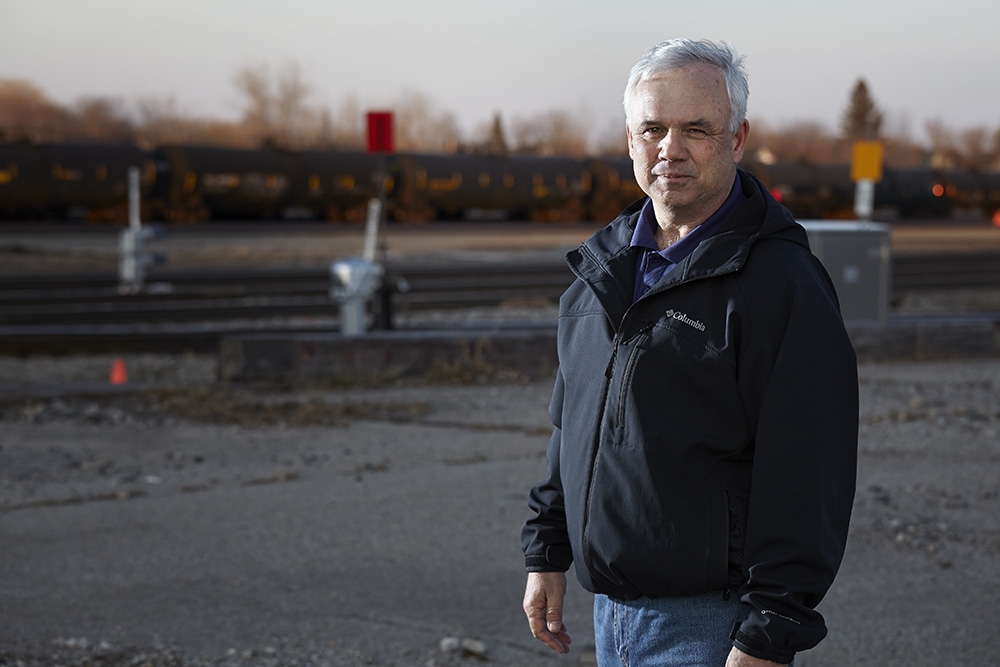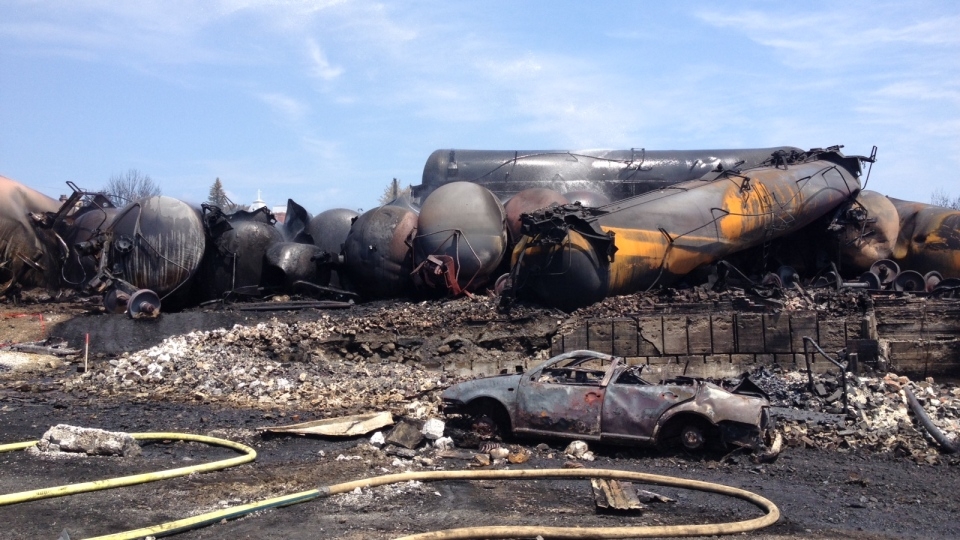
Railway Series: Interview with Michael Bourque
Ottawa Life interviewed Michael Bourque, the new President & Chief Executive Officer of the Railway Association of Canada. Here is what he had to share.
Why is this a very exciting time for Canada’s rail sector?
Michael Bourque: Well, it’s clear that we’re going to continue producing a lot of goods in this country from our vast natural resources… we’re going to keep manufacturing products. Even through the recession, in the last several challenging years of the rising dollar, increasing manufacturing competition from other countries and high energy costs, we still have a great many manufacturers in this country who are globally competitive. We have vast resources: we’re exporting bitumen, potash, mining products, forest products… and the list goes on. And we’re going to keep doing that. Examples like Quebec’s Plan Nord (the Northern Plan) demonstrate that we’ll be opening up new production, creating new communities, and putting in railways so companies can ship their product to market in a competitive manner. So there’s a renaissance going on, based on the fact that the country and the economy are continuing to grow and we’re continuing to export. You can couple that with the fact that the government and the Prime Minister are signing trade agreements with many new countries and markets. The vulnerability that companies felt from the downturn in the U.S. has really caused Canadian companies to focus their exports on new customers around the world. This means that we have to be able to provide a service that will allow them to get their products to market in a very competitive way… and that’s what is happening.
So are trucks taking a back seat, so to speak, to rail?
Michael Bourque: I can’t really speak for trucking, but you will probably find that they are also struggling to keep up with demand in many cases. I’ve read that they have pretty significant driver shortages. That’s because they are busy and they are part of the supply infrastructure that allows Canadian producers to get goods to market. Trucking still plays a very important role in delivering goods. The difference between trucking and rail is that we obviously have much more capacity, and probably the most important aspect is on the sustainability side where rail pretty much moves more than 70 per cent of everything in this country for about 3 per cent of the emissions. So the sustainability story is significant. We’re able to move very large quantities of products for a lower price than trucking, while using less infrastructure that is paid for by the public, because the rail system is a privately owned, managed and operated, paid-for and even policed operation. It doesn’t require government funding to keep the rail lines open.
What are the rail sector’s human resources challenges?
Michael Bourque: We’re going to be hiring 12 to 15 thousand people in the next four to five years, based on two trends: demographics where a number of people will be retiring from the industry, and growth in the industry. We currently have a number of programs to train new conductors, train new workers into the business and we’re working on building awareness around the rail sector as an exciting, future-oriented employer. The salaries are excellent with an average of about $80,000 a year. There are jobs from coast-to-coast and into new communities in the north. A locomotive today is far more technologically advanced than it used to be, so the training required for these positions is obviously more technologically-oriented nowadays.
What are some of the infrastructure challenges facing rail?

Trains today are actually higher. We’re talking about intermodal, so a lot of these trains carry containers that are stacked higher and this causes demand for infrastructure changes. For example, there’s a project in Windsor-Detroit to build a new tunnel to replace one that’s about 100 years old, with a bigger and deeper tunnel that needs to accommodate these trains that are significantly higher. Again, this is just another way of taking advantage of what’s already there, making better use of existing railways. There’s a lot going on in terms of car changing, double-stacking cars.
The most significant challenge for the future is how we make sure that our infrastructure – not just for rail but for the whole supply chain – is up to the task that we’re going to require. If we’re developing new resources from mines, whether it’s in the Ring of Fire in northern Ontario or in northern Quebec or in northern Canada where there are many mining operations, or if you look at shale gas and shale oil developments, you look at the amount of demand that there is globally for potash, for specialty crops like pulse crops (a group of more than 60 different grain legume crops grown around the world – Ed.), the fact is that there is much more demand on the supply chain and this means that rail has to work really effectively with ports and terminals and trucking and shipping. Whenever you talk about the integration of these modes, you’re also talking about passenger rail, because freight trains go through cities and you want to be able to make sure that your freight trains move freely through urban areas without being held up and without holding up passengers who are shunted off the main line until the freight train passes by. The biggest challenge will be infrastructure. How do we continue to build it? How do we collaborate with all of these different actors to make sure we build the most advanced, integrated supply chain infrastructure in the world so our customers can remain globally competitive? That’s really what it’s all about. How do we work to ensure that our customers can remain globally competitive? Because if they’re not, we don’t have customers and we’re not in business.
Some years ago, the Port of Vancouver and the whole gateway there was identified as a bottleneck and everybody worked together to eliminate that bottleneck. Traffic flow was improved, so the Vancouver experience showed that this could be done, but it has to be done in a collaborative fashion because, unlike the old days when governments would finance these expansions or upgrades, governments today don’t have the money to finance large infrastructure projects. Now what is required is a commercial basis for building and collaborating to create the infrastructure that is needed for all of the different parts to work together. I think what we’re seeing is a move toward more private-sector financing and public-private partnerships. We’re a private-sector enterprise. We’re not government-owned anymore. Government doesn’t pay for the track. We own all the track. We provide leasing on the track. We upgrade the track with a significant amount of capital investment every year. We even pay taxes on our rights-of-way, so we paying for our whole infrastructure. Therefore, we look at this as a business enterprise and the only way the advanced, integrated supply chain infrastructure can be built is through collaboration and commercial agreements with private-sector financing. And of course government will be at the table as one of the stakeholders, but it will increasingly become a commercial enterprise because governments simply don’t have the capital to invest in these projects.
How did Canada achieve the impressive feat of having one of the safest and most productive railways in the world?
Michael Bourque: It really comes down to innovation in the way that we work with customers, creating longer, higher, quicker cars. Safety inspections are done while freight trains are moving at a very slow pace. You can’t afford to have somebody walking around these very long freight trains; instead, the inspector monitors the train while it’s moving. The advantage is that the inspector will hear things and notice things that he wouldn’t necessarily detect if the train was at a standstill. And yet the net result is that the train is still moving and you’re increasing your efficiency. It’s really a story of innovation and persistence. I like to think that in this country, because of the seasonal and geographical challenges we face, that essentially it forces us to be smarter than everybody else!













